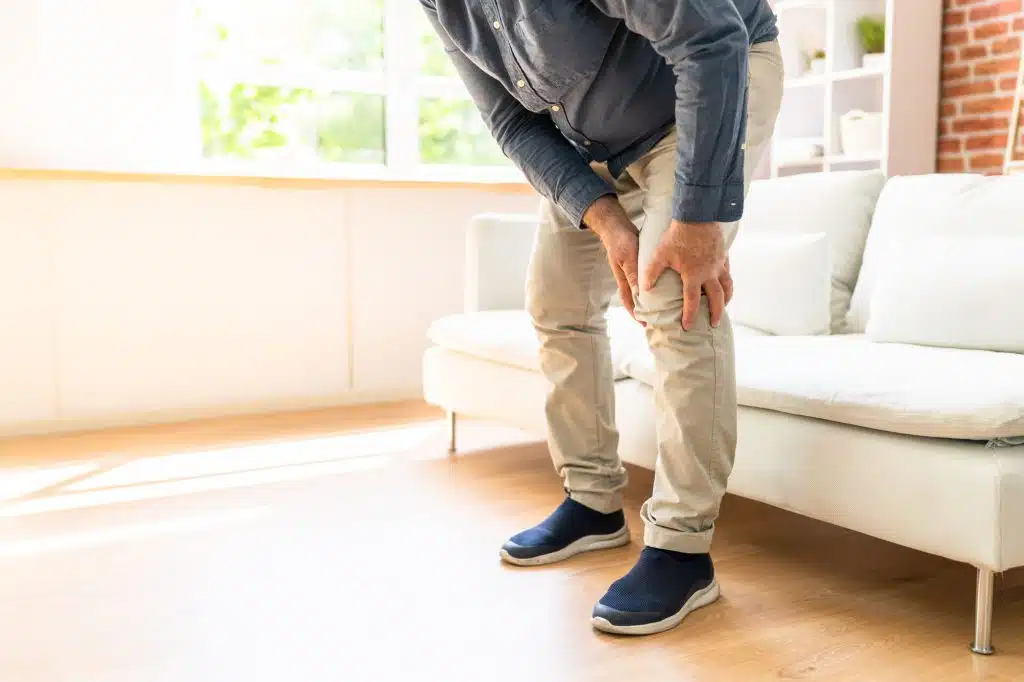There are countless reasons to stop smoking – and you’ve no doubt heard them a thousand times. It’s the single greatest preventable cause of disease and death in the U.S. and is actually a factor in one in five deaths.[1] Yet it still remains a prevalent issue, especially among those with chronic pain – despite the fact that smoking has actually been found to make pain worse. Read on to find out the connection between the two and discover tips for finally kicking the habit.
Prevalence
The percentage of smokers among the U.S. population is roughly 15% – meaning that 15 out of every 100 adults have smoked cigarettes in the past year.[1] That number has actually declined over the past several years, coming down from 21% in 2005. However, according to a 2015 study,[2] the number of smokers among the chronic pain population has actually been increasing. In 2000, 24.2% of the pain population smoked, and by 2010 that number had risen to 28.3%, almost double the percentage of smokers in the U.S. at large.
Links to Pain
Research has shown that smoking as few as 10 cigarettes a day causes a noticeable increase in general pain, in addition to slowing healing, worsening surgical outcomes and leading to more pain and opioid use after surgery.[3][4]
Smoking damages both the heart and blood vessels and leads to dangerous circulation issues. This means that bones and tissues are deprived of the oxygen-rich blood and nutrients that they need.[5] This can lead to or worsen degeneration of the lumbar and cervical spinal discs, causing severe back pain and neck pain.[6]
Moreover, according to the Cleveland Clinic, smokers are 1.5 times more likely to experience headaches and 80-90% of those who experience cluster headaches have a significant history of smoking.[3] They’re also more likely to have issues when it comes to their bones, since smoking leads to negative effects on bone healing and leads to more complications. On top of that, among men with knee osteoarthritis, smoking has been shown to lead to greater cartilage loss, in addition to greater pain levels.[7]
Tips to Help Quit
The list of smoking’s effect on pain levels isn’t a short one. It can cause and worsen a plethora of painful issues. Yet, at least for some of these issues, quitting can make a big difference. Here are a few tips to help you get started.
- Change up your routine to break the association of smoking with certain places or times of day.
- Stop carrying and hoarding cigarettes, whether at home, in your bag or at work. And don’t borrow cigarettes from anyone else. Plus, throw away your matches, lighters and ashtrays.
- Get more active: Walk instead of drive and use the stairs instead of the elevator. Exercise helps you relax and boosts morale.
- Take it one day at a time. Each day without a cigarette is good news for your health, family and bank balance.
Quitting smoking is the first step to reducing your pain – and improving your health – but it’s not the only thing you can do. Consider visiting a pain management specialist to get more advice and ideas on how to effectively manage your pain condition so you can get back to being a healthier, happier version of you.
References
[1] CDC. “Current Cigarette Smoking Among Adults in the United States.” March 14, 2016. Accessed November 30, 2016. https://www.cdc.gov/tobacco/data_statistics/fact_sheets/adult_data/cig_smoking/.
[2] Orhurhu, Vwaire J., Thomas P. Pittelkow, and W. Michael Hooten. “Prevalence of Smoking in Adults with Chronic Pain.” Tobacco Induced Diseases 13, no. 1 (July 17, 2015).
[3] Cleveland Clinic. “Do You Smoke to Cope with Pain? Research Finds Surprising Effect – Health Essentials from Cleveland Clinic.” September 30, 2015. Accessed December 1, 2016. https://health.clevelandclinic.org/2015/09/smoke-cope-pain-research-finds-surprising-effect/.
[4] Shi, Yu, Toby N. Weingarten, Carlos B. Mantilla, W. Michael Hooten, and David O. Warner. “Smoking and Pain.” Anesthesiology 113, no. 4 (October 2010): 977–92.
[5] National Heart, Lung and Blood Institute. “How Does Smoking Affect the Heart and Blood Vessels? – NHLBI, NIH.” November 4, 2014. Accessed December 1, 2016. https://www.nhlbi.nih.gov/health/health-topics/topics/smo.
[6] Science Daily. “Smoking Cigarettes Can Be a Chronic Pain in Your Neck.” February 18, 2016. Accessed December 1, 2016. https://www.sciencedaily.com/releases/2016/02/160218062227.htm
[7] Amin, S, J Niu, A Guermazi, M Grigoryan, D J Hunter, M Clancy, M P LaValley, H K Genant, and D T Felson. “Cigarette Smoking and the Risk for Cartilage Loss and Knee Pain in Men with Knee Osteoarthritis.” Annals of the Rheumatic Diseases 66, no. 1 (June 30, 2006): 18–22.











